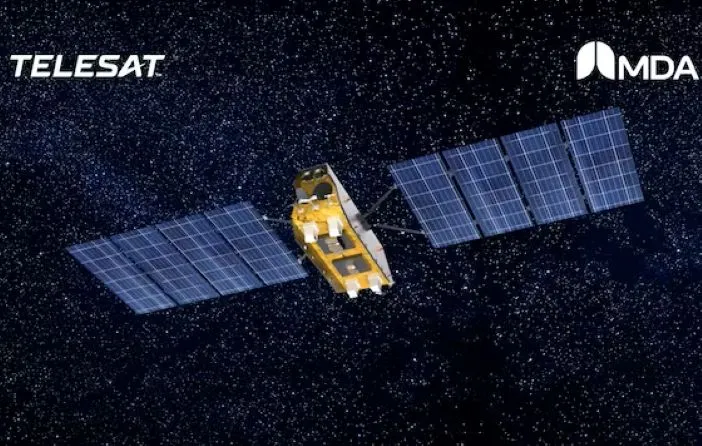Satellite operator, Telesat, has announced that MDA, a space technology company, will build 198 advanced satellites for the Telesat Lightspeed Low Earth Orbit (LEO) programme.
By taking advantage of key technology advances, including MDA’s digital beamforming array antennas and integrated regenerative processor, Telesat believes the re-designed Telesat Lightspeed network will achieve increased network efficiency and an enhanced flexibility to focus and dynamically deliver capacity to users. These technology advances allow each satellite to be slightly smaller than the satellites Telesat was previously considering putting into use, while still maintaining high levels of service performance, resiliency, and overall usable capacity in the network.
Telesat says that these satellites are also highly cost effective, resulting in an anticipated total capital cost saving of approximately US$2 billion for the 198-satellite programme, compared to Telesat’s prior capital estimate. This saving will facilitate the funding of the programme and improve its projected financial returns.
MDA will manufacture the Telesat Lightspeed satellites in its satellite systems design and high-volume manufacturing facilities in Quebec, with the program expected to create and maintain approximately 2,000 high-quality Canadian jobs.
About the Telesat Lightspeed network
The Telesat Lightspeed network was designed from its inception to serve the mission-critical connectivity requirements of enterprise and government users. Service offerings for the optically linked mesh network in space include multi-Gbps data links, Layer 2 MEF 3.0 standards, and secure, resilient, low-latency broadband connectivity anywhere in the world. With the signing of this contract with MDA, the Telesat Lightspeed programme begins immediately, with satellite launches scheduled to commence in mid-2026 and polar and global services scheduled to begin in late 2027.
“I’m incredibly proud of the Telesat team for their innovative work to further optimise our Telesat Lightspeed design – which was already a highly advanced and high-performing LEO network – resulting in dramatically reduced costs with unmatched enterprise-class service offerings,” stated Dan Goldberg, president and CEO of Telesat. “MDA’s deep expertise as a LEO prime contractor, as well our own leading expertise in satellite operations and systems engineering, gives us the highest level of confidence in meeting our objectives.”
A boost to programme funding
In other news at the company, Telesat Lightspeed is now fully funded through global service delivery, taking into account the company’s own equity contribution, certain vendor financing, and aggregate funding commitments from its Canadian federal and provincial government partners.
Telesat now has in place aggregate funding commitments from its Canadian federal and provincial government partners, for a combined amount of up to approximately US$2 billion. The finalisation of this funding is dependent on a number of conditions, including completion of confirmatory due diligence and the conclusion of definitive agreements.
This funding, combined with Telesat’s own approximately US$1.6 billion equity contribution, as well as certain vendor financing, is believed sufficient to provide the Telesat Lightspeed programme with sufficient funds to launch global service, which will occur once the first 156 satellites are in orbit. Telesat will continue adding satellites that are funded using the Telesat Lightspeed cash flow to complete the initial 198 satellite constellation. In addition to the approximately US$2 billion in anticipated capital savings, Telesat also expects substantial savings due to significantly reduced financing costs relative to the company’s prior plan.
The capital investment for the Telesat Lightspeed programme is approximately US$3.5 billion and includes 198 Telesat Lightspeed satellites, satellite launch vehicles, a global ground network of landing stations and operations centres, business and operations support systems, and expenditures to support the further development of a portfolio of user terminals for Telesat’s target markets.





